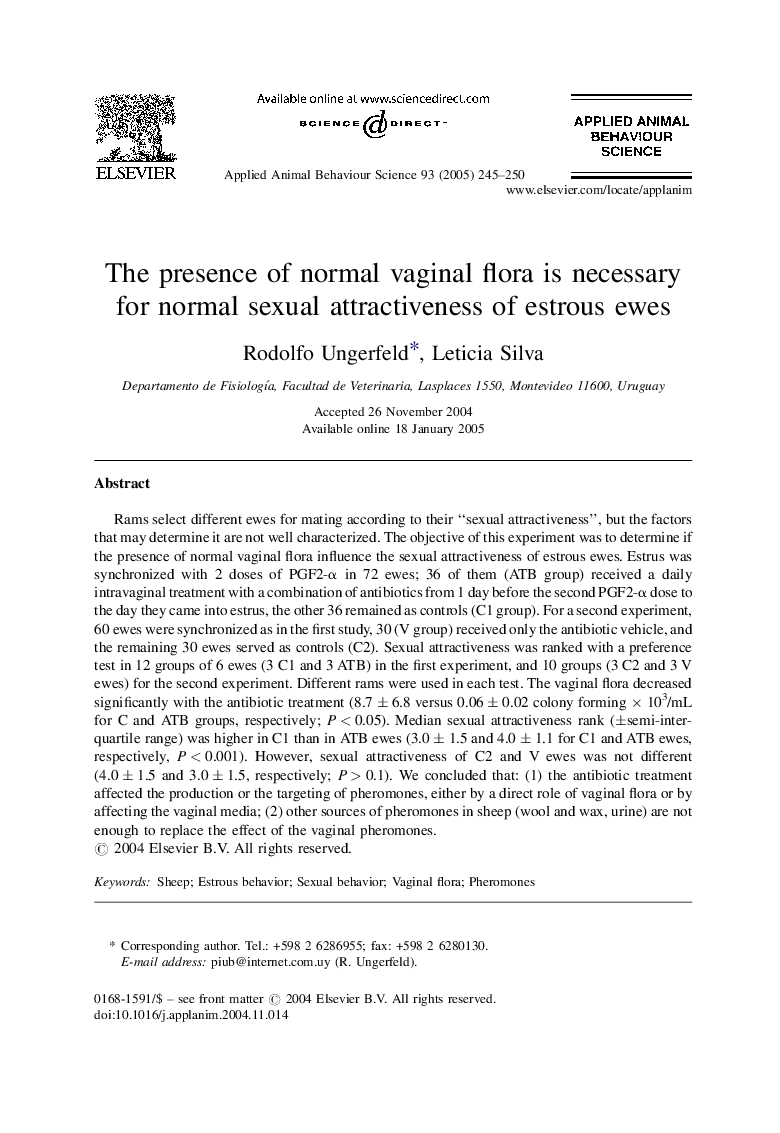| Article ID | Journal | Published Year | Pages | File Type |
|---|---|---|---|---|
| 9475814 | Applied Animal Behaviour Science | 2005 | 6 Pages |
Abstract
Rams select different ewes for mating according to their “sexual attractiveness”, but the factors that may determine it are not well characterized. The objective of this experiment was to determine if the presence of normal vaginal flora influence the sexual attractiveness of estrous ewes. Estrus was synchronized with 2 doses of PGF2-α in 72 ewes; 36 of them (ATB group) received a daily intravaginal treatment with a combination of antibiotics from 1 day before the second PGF2-α dose to the day they came into estrus, the other 36 remained as controls (C1 group). For a second experiment, 60 ewes were synchronized as in the first study, 30 (V group) received only the antibiotic vehicle, and the remaining 30 ewes served as controls (C2). Sexual attractiveness was ranked with a preference test in 12 groups of 6 ewes (3 C1 and 3 ATB) in the first experiment, and 10 groups (3 C2 and 3 V ewes) for the second experiment. Different rams were used in each test. The vaginal flora decreased significantly with the antibiotic treatment (8.7 ± 6.8 versus 0.06 ± 0.02 colony forming à 103/mL for C and ATB groups, respectively; P < 0.05). Median sexual attractiveness rank (±semi-interquartile range) was higher in C1 than in ATB ewes (3.0 ± 1.5 and 4.0 ± 1.1 for C1 and ATB ewes, respectively, P < 0.001). However, sexual attractiveness of C2 and V ewes was not different (4.0 ± 1.5 and 3.0 ± 1.5, respectively; P > 0.1). We concluded that: (1) the antibiotic treatment affected the production or the targeting of pheromones, either by a direct role of vaginal flora or by affecting the vaginal media; (2) other sources of pheromones in sheep (wool and wax, urine) are not enough to replace the effect of the vaginal pheromones.
Related Topics
Life Sciences
Agricultural and Biological Sciences
Animal Science and Zoology
Authors
Rodolfo Ungerfeld, Leticia Silva,
